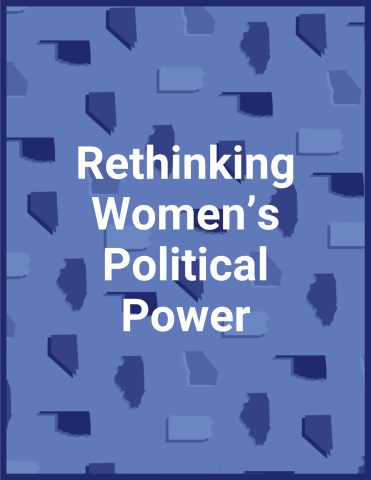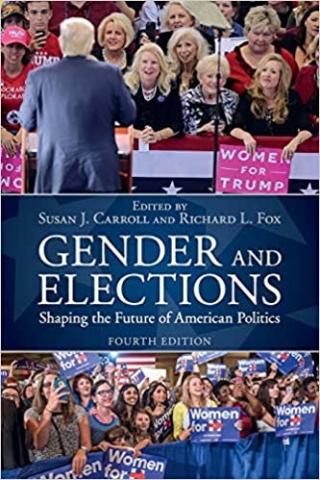The gender gap is the difference between the proportions of women and men who support a given candidate, generally the leading or winning candidate. It is the gap between the genders, not within a gender. Even if women and men favor the same candidate, they may do so by different margins, resulting in a gender gap.
Voter turnout refers to the proportion of eligible voters who cast a ballot in an election. Women have voted at higher rates than men in every presidential election since 1980, with the gap between women and men growing slightly larger with each successive election.
The women’s vote describes the division in women’s support for major party candidates in any given race. It is the percentage-point advantage that one candidate has over the other among women voters – that is, the difference in women’s support for the Democratic and Republican candidates.
Rethinking Women’s Political Power
by Kelly Dittmar, Ph.D.
ReportResearchCandidate RecruitmentCandidates and CampaignsWomen Voters and the Gender GapWomen and Term LimitsGender and Race/EthnicityElective OfficeCongressStatewide ExecutiveState LegislatureLocalGender and Elections: Shaping the Future of American Politics, 4th Edition
Eds. Susan J. Carroll, CAWP, Rutgers University and Richard L. Fox, Loyola Marymount University
Cambridge University Press, 2018 Fourth Edition, 319 pagesBookResearchCAWP ScholarCandidates and CampaignsPolitical PartiesWomen Voters and the Gender GapGender and Race/EthnicityFederal ExecutiveCongressStatewide ExecutiveState LegislatureWomen Voters
by Kelly Dittmar
Book chapter in Minority Voting in the United States, eds. Kyle L. Kreider and Thomas J. Baldino. Santa Barbara, CA: Praeger, 2015.Book ChapterResearchCAWP ScholarWomen Voters and the Gender GapThe Gender Gap: Gender Differences in Vote Choice and Political Orientations
by Kelly Dittmar
7/15/14Fact SheetResearchCAWP ScholarA Closer LookWomen Voters and the Gender GapThe Quest for Women’s Votes in Election 2012
by Kira Sanbonmatsu
Scholars Strategy Network Basic FactsArticleResearchElection WatchCAWP ScholarWomen Voters and the Gender GapGender Stereotypes and Gender Preferences in American Politics
by Kira Sanbonmatsu and Kathleen Dolan
Chapter in Improving Public Opinion Surveys: Interdisciplinary Innovation and the American National Election Studies, Eds. John H. Aldrich and Kathleen M. McGraw. Princeton University Press, 2012Book ChapterResearchCAWP ScholarCandidates and CampaignsWomen Voters and the Gender GapCongressOrganizing American Politics, Organizing Gender
Book chapter by Kira Sanbonmatsu in The Oxford Handbook of American Elections and Political Behavior, Ed. Jan E. Leighley.
Oxford University Press, 2010, 800 pagesBook ChapterResearchCAWP ScholarCandidates and CampaignsWomen Voters and the Gender GapGender and Elections: Shaping the Future of American Politics, 2nd Edition
Eds. Susan J. Carroll, CAWP, Rutgers University and Richard L. Fox, Union College, New York
Cambridge University Press, 2009 Second Edition, 314 pagesBookResearchCAWP ScholarPolitical PartiesCandidates and CampaignsGender and Race/EthnicityWomen Voters and the Gender GapState LegislatureStatewide ExecutiveCongressFederal ExecutiveGender Stereotypes and Attitudes Toward Gender Balance in Government
by Kathleen Dolan and Kira Sanbonmatsu
American Politics Research, August 2008ArticleResearchCAWP ScholarCandidates and CampaignsWomen Voters and the Gender GapCongressSecurity Moms and Presidential Politics: Women Voters in the 2004 Election
Book chapter by Susan J. Carroll in Voting the Gender Gap
Ed. Lois Duke Whitaker
University of Illinois Press, 2008, 232 pagesBook ChapterResearchCAWP ScholarWomen Voters and the Gender Gap











